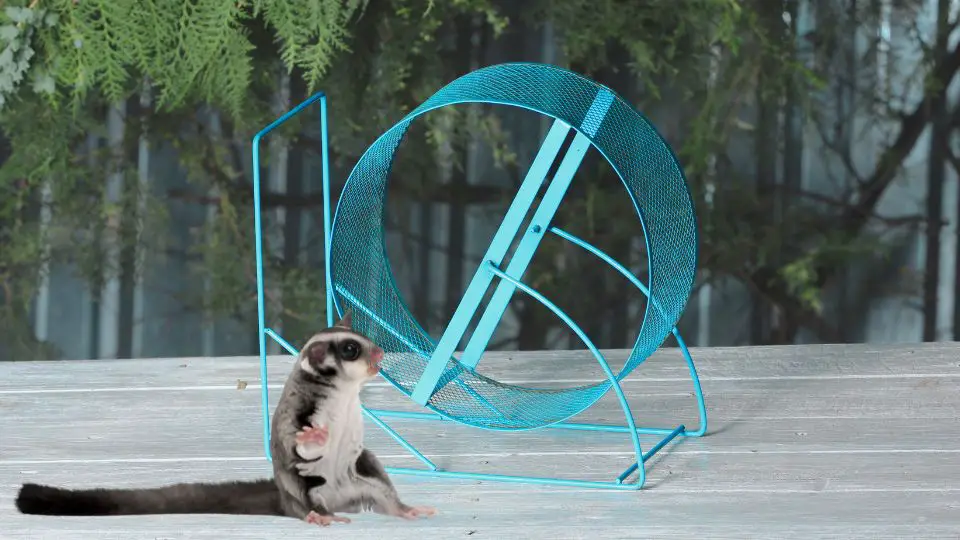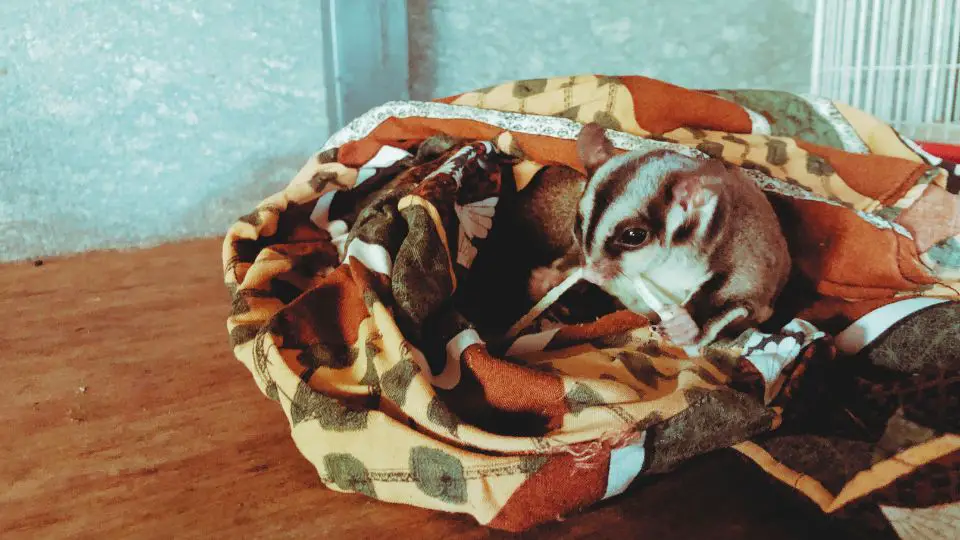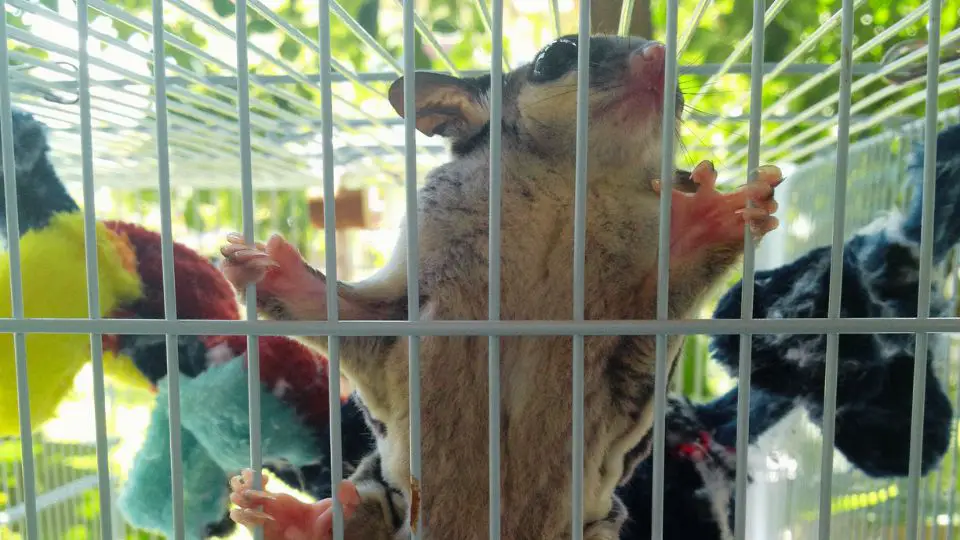It’s crucial to maintain your pets’ cage clean at all times. Not only will this serve to promote the excellent health of your sugar gliders, but will also aid to decrease any obvious smells that you may have from maintaining sugar gliders.
Every two weeks, clean your sugar glider cage with a solution of hot water and white vinegar; do not use chemicals on your glider cage since they may be very dangerous to your sugar glider. Make sure to completely bathe and dry the cage of your joeys before placing them back in their cage.
But the subject of how often you should clean your glider’s cage is not really plain and dry. You know, it truly relies on various aspects, mainly how big is the cage and how many animals occupy the habitat? The bigger the cage and fewer the animals, the less you need to clean it. But for the purpose of this post, let’s use the example of an average size environment.
When to clean your glider’s cage
Sugar gliders, as you are surely aware, are considered to be nocturnal creatures. These animals will sleep for the most of the day and become excessively active during the evening hours.
Because of their sleeping cycles, cleaning throughout the day is considerably easier for them, as they can just sleep someplace else while the cage is being cleaned.. Gliders may have toys, additional pouches, tray liners, and other items out of their cages during this period.
Gliders will need to be removed from the enclosure itself if you want to spray down the whole cage or its bars with a disinfectant.
You must make certain that their temporary holding location is safe and capable of containing the group.
Here’s an example of a cleaning schedule that you may use:
- Food plates and water bottles should be washed once a day in hot water with dish soap (we recommend Dawn)
- Cages should be cleaned every couple of days by wiping down the wires.
- Bedding — we use newspaper as bedding in the majority of our cages, and we change it every three days.
- Toys are washed on a regular basis. When they have glider-do accumulation, it is easy to tell. We soak them in GreenStump, rinse them well, and put them back into service. Items such as Wodent Wheels are lubricated with vegetable oil to preserve them from rusting. Only a little quantity of oil should be used.
- Cage cleaning from top to bottom – we have a large number of additional cages on hand, which makes this operation much simpler for us. This is a task that we do at least once a quarter. We move the cages to a more open area (easy to manage in Florida year round.) We spray them liberally with Scooter’s Choice and let them sit for 10 minutes. After that, we completely rinse them off and allow them to dry in the sun. Most people don’t have spare cages, so if you start in the morning and finish in the evening, the cages should be ready to be placed back into use in a few hours. The gliders are usually not bothered by sleeping in a bonding pouch until the job is completed.
How to keep your sugar glider bedding clean
Poop tray bedding may be made in a variety of ways, the most simple of which is to just use some form of non-toxic paper (generally not newspaper since many inks can be toxic). In general, you will discover that your gliders are extremely clean little pets, and the quantity of droppings they make is rather low – most people only need to replace the poo tray liner once or twice a week on average.
The vast majority of non-toxic paper (such as plain paper towels) is more than capable of absorbing whatever is thrown at it. However, paper towels may become prohibitively costly over time, so to make things even more convenient, you can find on the market custom-made cage liners that are made of a special, glider-safe material and are already cut to precisely fit the poo tray in your cage. Alternatively, you may use cotton rags that can be washed and reused.
Almost everything is cleaned on a “as required” basis, including toys, plants, wheels, and so on. Remember that our tiny amigos have a tendency to urinate and defecate in random places as they roam about in their cage, so use your best judgment when you see any “accumulation.”
So how often should you clean the cage
It is sufficient to shake out your cage liner every day and to wash it several times a week if you are using cotton liners. It’s a good idea to have at least two different types of cloth pan liners so you can swap them out.
Cedar and pine should not be used since they might cause respiratory difficulties. Cleaning the cage pan on a regular basis eliminates odor and promotes the health of the gliders. Every week, clean all glider accessories, including toys (glider-specific, bird-safe, and child-safe options), fleece bags, drink bottles, and other small items.
Fleece sleeping pouches may be cleaned with standard laundry detergent; however, fabric softeners should not be used on them. Plenty of hot water is advised for cleaning the cage, pan, and toys (soap is OK if rinsed well). Any cleaning chemicals that are harmful or have a strong odor should be avoided. The sense of smell is very important to gliders and it is important not to annoy them with an overpowering or unusual scent. The cage itself should be cleaned once a month, or more often if you have a large number of gliders in your home.
If your gliders are in their sleeping pouches, you may relocate them to a small travel cage while the cage is being cleaned so that they will be protected from other family animals. Vinegar combined with hot water is a non-toxic cleaning solution that can assist you in cleaning your cages in a safe manner.
If you have access to a pressure washer, you may also use it with low pressure to clean the surface. Gliders like it when their environment smells like them. As a result, we do not advocate cleaning everything at the same time. Take the following example: clean the cage once a month, but do not clean the toys; when you clean the toys, don’t clean the cage at that time. They should have their sleeping pouch cleaned at least once a week.







